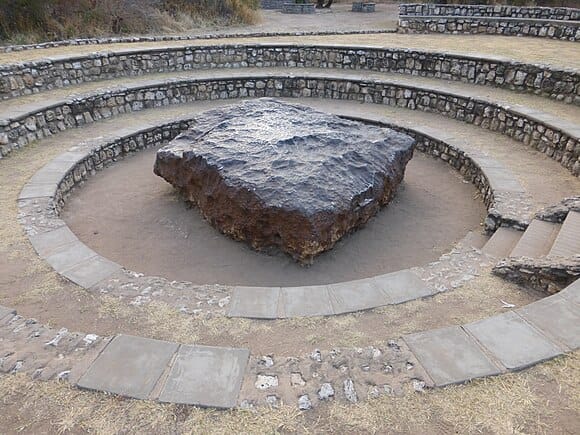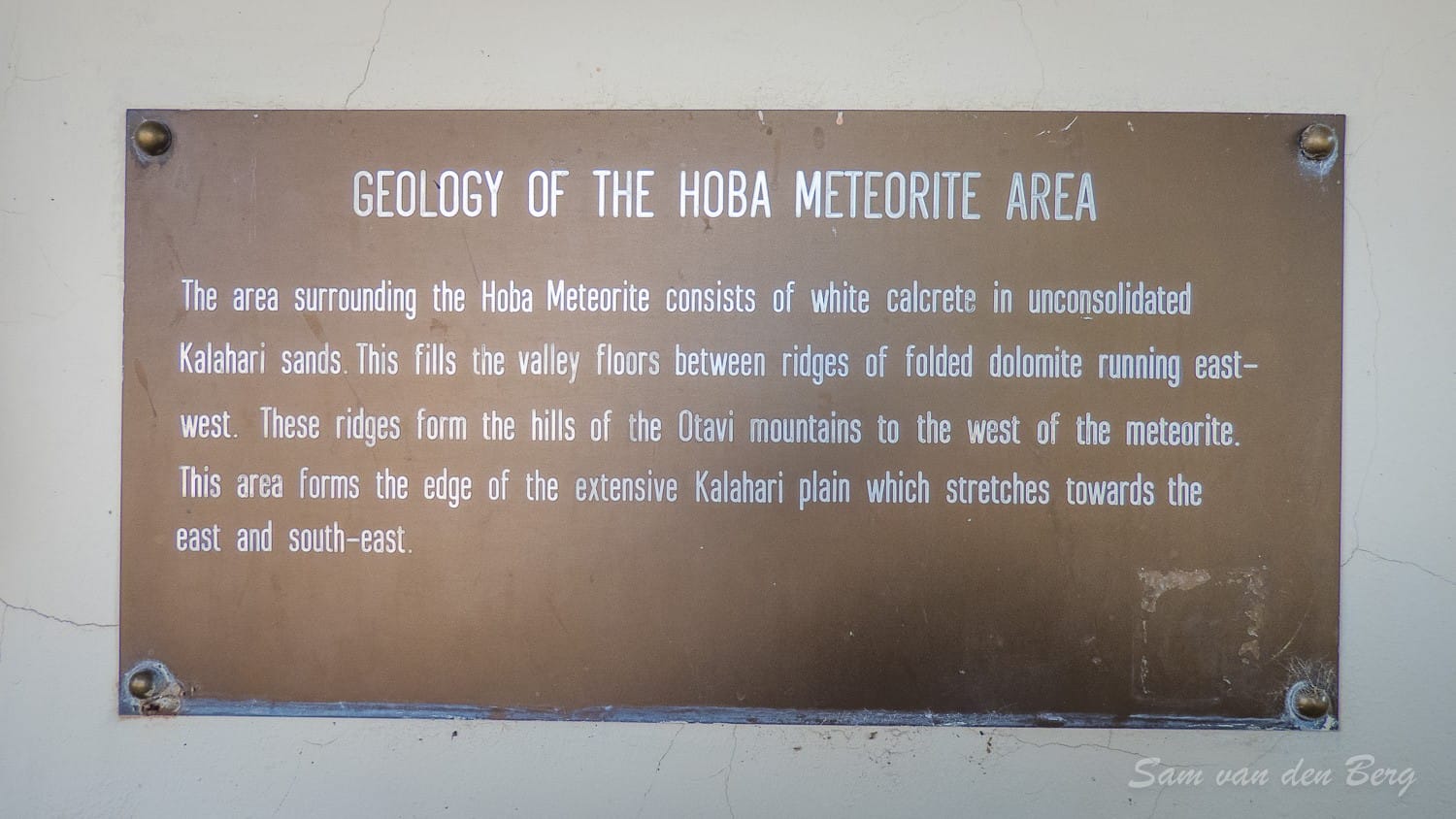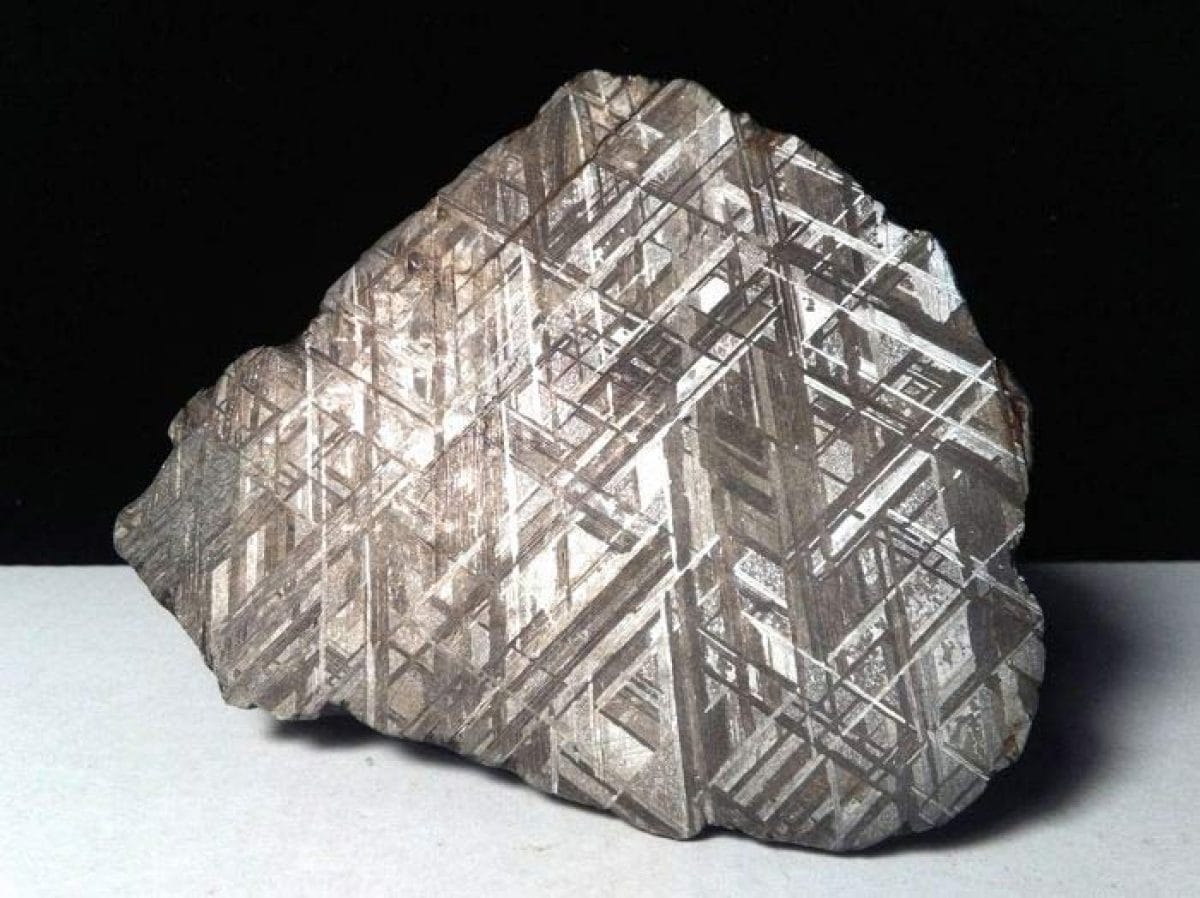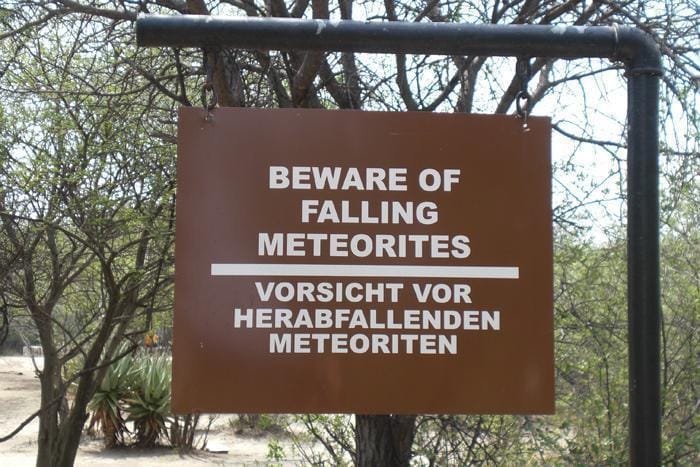Hoba Meteorite -- the Largest Natural Piece of Iron on Earth
by Ken Rock, MSDC Editor

The Hoba meteorite is the largest intact meteorite that has been found on Earth, weighing in at about 60 tons. It was discovered in 1920 on a farm called Hoba West, located 19 km (12 miles) west of Grootfontein in what is now northern Namibia. Scientists determined that this meteor came to Earth between 80,000 and 300,000 years ago and has never been moved. They date the rock’s age at 200 to 400 million years old. A short YouTube video about the Hoba meteorite can be found here.
In 1955 the Hoba meteorite was declared a national monument. Namibia, then known as South West Africa, was ruled by South Africa. The South African government wanted to protect the meteorite from vandalism. In 1987 the owner of the farm donated the site of the meteorite to the government.
Discovery
The meteorite was discovered just over 100 years ago (1920) by Hermanus Brits. His statement regarding the discovery is kept at the Grootfontein Museum and it reads:
"One winter as I was hunting at the farm Hoba I noticed a strange rock. I sat down on it. Only its upper part was visible. The rock was black, and all around it was calcareous soil. I scratched the rock with my knife and saw there was a shine beneath the surface. I then chiselled off a piece and took it to the SWA Maatskappy in Grootfontein, whose director established it to be a meteorite."
Digging around the rock showed that only a small part of it had been above ground. As more soil was removed, the huge size of the rock was revealed. Its large mass made it too heavy to move. The Hoba meteorite remains where it was found to this day. Because of the meteorite’s remote location, knowledge of its existence did not become widespread until 1929, when Dutch American astronomer Willem Luyten wrote an article about it for a South African newspaper. Luyten's scientific report in 1929 was the first scientific report on the meteorite. Subsequent testing confirmed the metallurgical composition.

Unfortunately, vandals have since damaged the meteorite. In 1985, Rössing Uranium Ltd made funds available to the National Monuments Council's Regional Committee for SWA to combat vandalism. In collaboration with Rössing, the Council launched a project to protect the meteorite and make the surroundings more attractive for visitors. Mr. J Engelbrecht, the farm owner since 1987, donated an area for the development of the site. In that same year (1987), an information center was established to meet educational needs.
A stone amphitheater was constructed around the meteorite and a visitors’ center was built nearby. Thousands of people visit the site each year. The name Hoba also means “gift”, which it truly became to the people of Namibia.
Physical Characteristics
The Hoba meteorite is roughly rectangular in shape with a flat top and flat bottom. It measures about 10 feet across in each direction and is about 3 feet thick. Because so much of it survived its impact, it is likely that the Hoba meteorite entered Earth’s atmosphere at a shallow angle and hit the ground at the relatively low speed of less than several hundred meters per second.

The impact likely formed only a small crater, about 66 feet in diameter and about 16 feet deep, that quickly eroded away. The Hoba meteorite is considered to be the largest natural piece of iron on Earth. Its composition is actually about 82.3 percent iron, 16.4 percent nickel, and 0.8 percent cobalt. The meteorite once weighed as much as 66 tons, but scientists and souvenir hunters have chipped away bits of it over the years.
Types of Meteorites

There are three main types of meteorites out there in the vastness of space: iron, stony-iron, and stony. The Hoba is called an ataxite iron meteorite. Ataxite refers to an iron meteorite that contains high concentrations of nickel as well. These meteorites are much rarer and do not have the Widmanstätten pattern, a characteristic geometrical pattern usually found in iron meteorites. This absence is due to the presence of nickel.

Is Hoba Really the Largest?
Although it is technically true that the Hoba is the largest meteorite found on the earth's surface, it's only the biggest of the known and tangible meteorites.
The Chicxulub asteroid, for example, which killed the dinosaurs, may have produced many meteorites. Scientists theorize that the impact may have caused fragments of matter to eject into the atmosphere able to escape the earth return as meteorites.
A paper from 2008 states that "a number of fragments from the Chicxulub crater have fallen onto the Moon and the Earth... and are waiting to be identified as Chicxulubites." The impact crater has been analysed and imaged in great detail using geophysical techniques.
Additionally, nearly two-thirds of all meteorites on earth were found in Antarctica, according to the Meteoritical Society. Compacted in ice, they are hard to reach and scientists estimate that a large number still haven't been found.

Many of these meteorites end up in the ocean, and are concentrated on the surface of ice sheets (known as blue ice). Depending on conditions, this can make them easily recoverable, although discovering them has, historically, been more challenging.

Sources
Kristine De Abreu, ExplorersWeb, Natural Wonders: Hoba, The World’s Largest Meteorite, April 1, 2023, Kristine De Abreu
The Editors of Encyclopedia Britannica, Hoba meteorite, October 5, 2023. This article was most recently revised and updated by Erik Gregersen.
L. J. Spencer, M.A., Se.D., F.RS. With chemical analyses by M. H. Hey, B.A., B.Sc. Mineral Department, British Museum of Natural History. The Mineralogical Magazine and Journal of the Mineralogical Society, No. 136. March, 1932. Vol. XXIII. Hoba (South-West Africa), the largest known meteorite. (With Plate I.)
Vogt, A. 2004. National Monuments in Namibia. 2nd ed. Macmillan, Windhoek.
